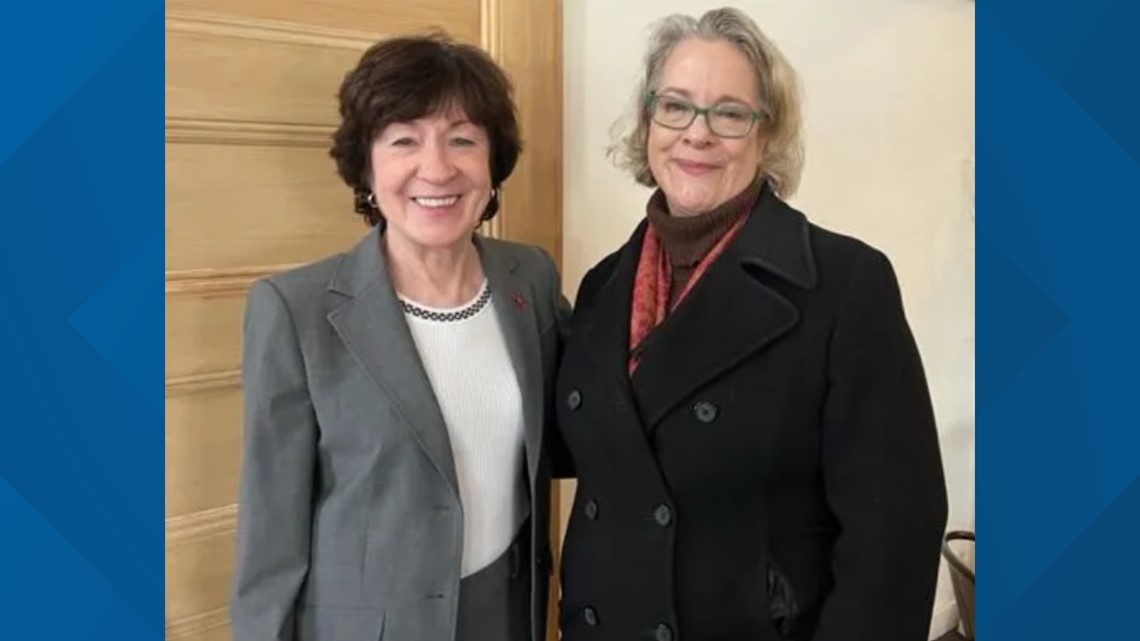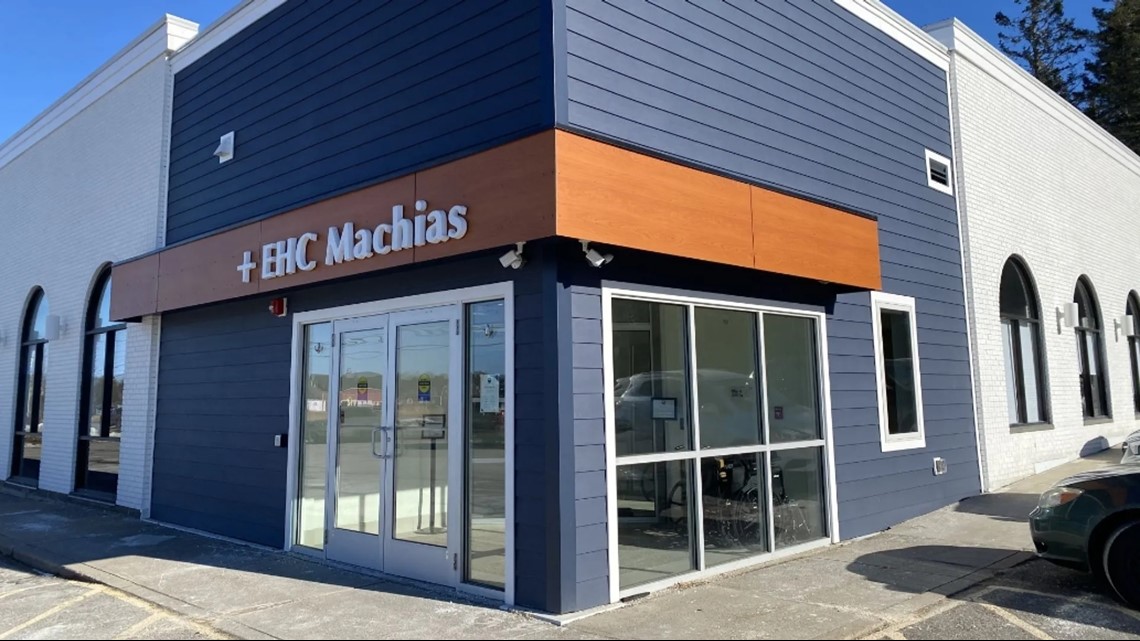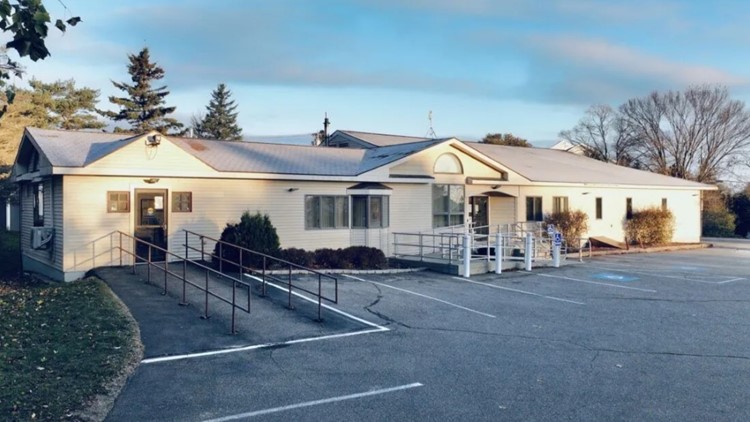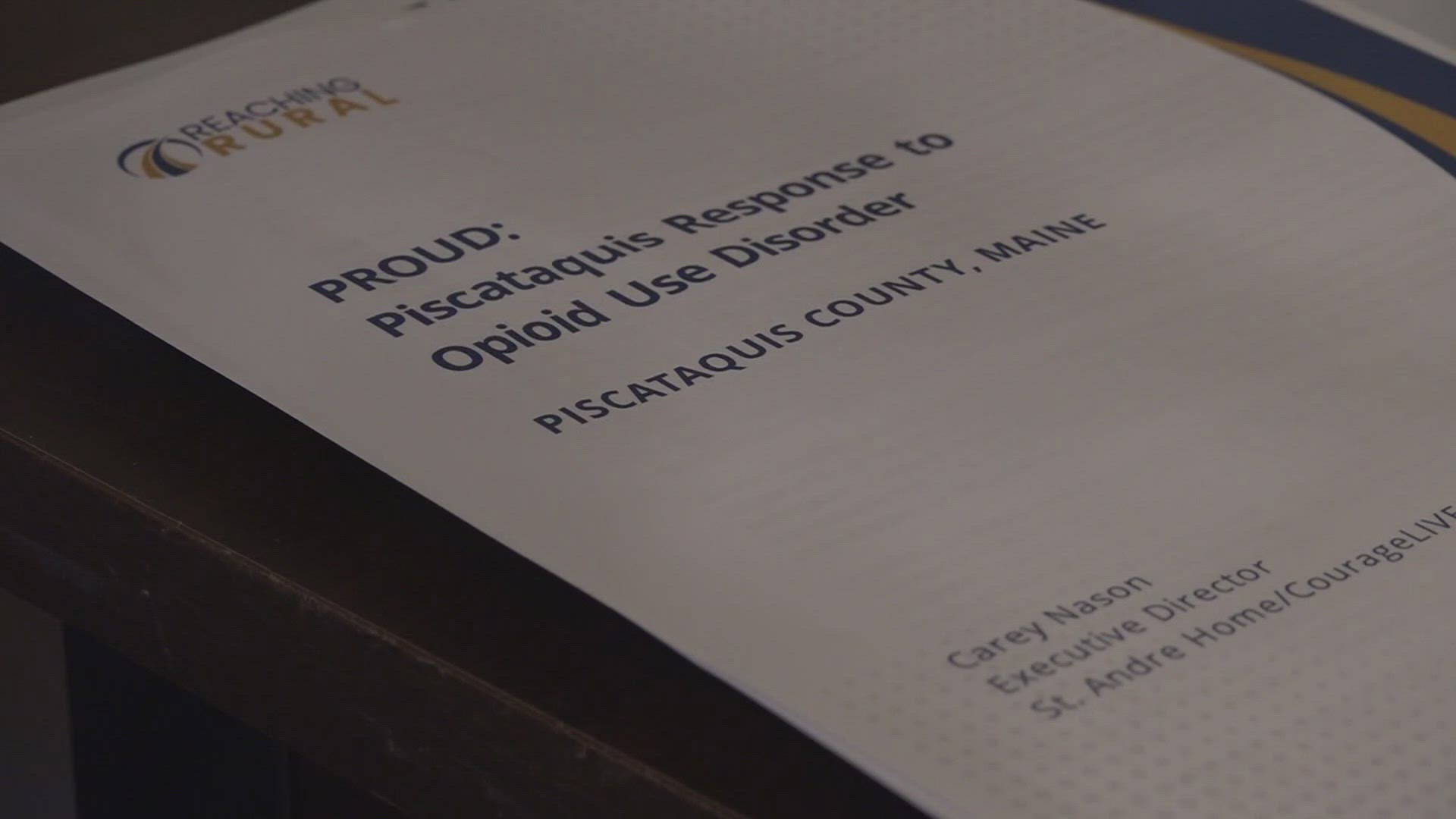EASTPORT, Maine — Since artist Amy Ray returned to her beloved hometown of Eastport three years ago, she and her husband, Mike Stewart, have gotten everything they wanted — a quaint coastal home, two shops downtown and a vibrant art scene.
What Ray didn’t get was a dentist, at least not without a lengthy hassle.
Ray wanted to visit the dentist at Eastport Health Care, where she receives primary care, but was told it would be a long wait — at least four years.
“It turned out that I had quite a serious abscess,” Ray said. She was able to see a private dentist “but only because I pulled some strings.”
Ray said she doesn’t hold it against the health center. Returning after many years away, she sees how much Eastport has grown and understands the pressure it puts on medical providers.
According to the most recent census data, Washington County, like most of the state, saw its population grow, adding roughly 450 new residents over the last four years. Three percent of that increase was in Eastport, which now has 1,321 full-time residents, 133 more than in 2020.
Although the number seems small, it doesn’t tell the whole story about the added pressures on Eastport’s limited resources, including health care.
The summer months and time before offseasons see a flood of tourists, vacationers and summer residents, many needing health care. Although a trendy artist community, according to census data Eastport has a poverty rate of around 15 percent and a median household income of only $51,669.
About 10 percent of residents don’t have health insurance, and there aren’t enough health providers.
Eastport, like all communities in the county, is classified as being in a Health Professional Shortage Area (HPSA), according to the federal Health Resources & Services Administration, meaning a shortage of primary, dental or mental health care providers — or all of the above.
Keenly aware of the growing demand, Eastport Health Care (EHC), which already serves about 5,400 patients, is rapidly expanding its services and footprint in Downeast Maine. Last year the nonprofit organization built a 10,000-square-foot facility on Dublin Street in Machias to replace an aging and cramped building on Fremont Street that previously housed EHC services.
Now, with an infusion of nearly $6 million in state and federal grants, EHC is again expanding. The federally supported community health center recently purchased a 2.8-acre lot adjacent to the IGA store on Washington Street in Eastport, around the corner from its existing offices, and plans to build a medical facility larger than the one in Machias.
“We’re the oldest county in the oldest state in the nation, and we have unacceptable rates of chronic illness, suicide and addiction,” said the EHC CEO, Ellen Krajewski. “These all make the work of community health centers and the hospitals very important.”
Krajewski, who moved to Eastport from Vermont in 2018 to take the CEO position, said the patient load has grown 33 percent over the past five years.


She said the Eastport expansion will more than double the size of its current building, the Rowland B. French Medical Center at 30 Boynton St., which was built in 1978.
Once funding is in hand, Krajewski said the design phase will begin. She anticipates the facility will be two stories, and between 13,000 and 17,000 square feet. Larger than the Machias center, it should allow for a broader scope of services.
All of the services at the Boynton Street facility, including dental, primary care, behavioral health and diabetes care, will move to the new facility.
The added space will allow room for additional dental professionals and primary care providers, and better spaces for behavioral health services, as well as an expanded diabetes center.
Krajewski said the new building should provide a more comfortable space for patients and providers, which she hopes will lead to a higher level of care and attract new staff.
With 35 providers in Eastport and roughly another 25 in Machias, Krawjeski said EHC is optimistic about growing the staff at both locations, despite staffing shortages in the region due to a limited pool, retiring professionals and difficulty attracting providers to the remote, rural community.
EHC is already having success with recruiting, bringing in a few new providers at both locations, including a new medical director, Dr. Robert Phares. He was recruited from West Virginia to replace Dr. Cynthia Sammis, who retired last year.
Down East Community Hospital (DECH), which operates a hospital in Machias and a sister hospital in Calais, also offers primary care at five locations. In a statement to The Maine Monitor, DECH CEO Steve Lail said despite sometimes competing with EHC for providers, patients and funding, it welcomes the EHC expansion.
“We have a good working relationship with EHC, and they refer many of their patients to DECH for specialty care, imaging, etc.,” Lail said. “Increasing access to … primary care services is good for the community all around.”
The EHC project is being funded with a mix of grants. The largest — $5,061,000 — came from the office of Sen. Susan Collins.
“It is critical that Mainers in every part of the state have access to the medical services they need,” said Collins in a statement to The Maine Monitor. “This funding would support Eastport Health Care’s continued expansion, helping to increase and improve the quality of an array of health-care services offered to Eastport and its surrounding rural communities.”
The bill that included the grant was approved by the Senate Appropriations Committee last July, but allocation awaits a finalized congressional budget, which is being negotiated, said Phoebe Ferraiolo, the deputy communications director for Collins.
An additional $281,400 came from an Emergency Rural Health Care grant from the U.S. Department of Agriculture rural development office in Maine. Rhiannon Hampson, the state director of the department, said the Eastport Community Health Center project is more than a one-off investment.


“It’s not about lottery winners, like, ‘oh, well, wasn’t that community lucky because they leveraged that grant,’” said Hampson. “It’s actually happening all over the state. It’s happening all over the country. It’s part of this whole movement of investing in rural health care centers.”
The project also received state funding from a Maine Thrive Grant. The $500,000 forgivable loan funded the purchase of the property and will help with other project costs.
Krawjewsi said the community health center’s mission is the same as it was in the 1970s, when Eastport leaders first envisioned a public health model: to provide Washington County with high-quality behavioral, dental and primary care services, regardless of a patient’s ability to pay.
As a federally qualified community health center receiving federal funding to offset lower revenue, EHC is required to price services on a sliding scale, based on family income. EHC is one of the six such health centers serving Washington County — in Milbridge, Harrington, Lubec, Eastport, Calais, Princeton, and the East Grand region that borders Aroostook County.
Clinics run by Indian Health Services also provide primary and other health services for Passamaquoddy tribal members at Pleasant Point and Indian Township, where community needs, ranging from diabetes to substance use disorder, are also surging.
“Even if all of the health-care centers increased access to care twofold, threefold, fourfold, we still can’t move the needle because the situation really is desperate nationwide,” said Jesse Bean, the health director for Pleasant Point Health Center.
In 2023, the county’s community health centers received a total of $6,236,471 in funding from the Health Resources & Services Administration. The agency awards grants to rural health centers to help meet needs in the often impoverished communities.
Some community health centers, such as EHC, have designated staff members who work with patients to address a host of barriers that people face when trying to access health care, including food insecurity, housing inequality and lack of reliable transportation.
Workers arrange rides for appointments, help patients apply for MaineCare and low-income housing, and link patients with myriad community resources, such as food banks.
“We as health centers step up to serve, not only our patients, but also the community to the best of our ability,” said Krajewski. “We are the safety net, together with our hospital partner.”
This story was originally published by The Maine Monitor, a nonprofit and nonpartisan news organization. To get regular coverage from the Monitor, sign up for a free Monitor newsletter here.



